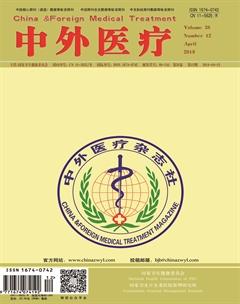人性化護理干預在新生兒護理中的應用效果探討
劉巖

[摘要] 目的 探討人性化護理干預在新生兒護理中的應用效果。 方法 方便選取該院2017年6月—2018年6月收治的100例新生兒作為研究對象,對100位新生兒進行編號,單號新生兒為研究組,雙號新生兒為對照組,各為50例。對兩組新生兒采用不同護理干預模式,研究組采用人性化護理干預模式,對照組采用常規護理干預模式。護理一個月后,觀察與比較兩組新生兒哭鬧現象、舒適度以及護理滿意度等。 結果 護理后,研究組新生兒的每日哭鬧次數為(2.64±2.14)次,低于對照組(3.72±2.16)次,差異有統計學意義(P<0.05);研究組新生兒每日睡眠時間為(20.96±0.86)h,對照組每日睡眠時間為(18.61±0.76)h,差異有統計學意義(P<0.05);研究組平均住院時間為(6.97±2.31)d,對照組平均住院時間為(15.04±2.45)d,差異有統計學意義(P<0.05);研究組護理滿意度為98.00%,顯著高于對照組82.00%,差異有統計學意義(P<0.05)。 結論 將人性化護理干預應用于新生兒護理中能夠提高新生兒舒適度,縮短住院時間,提高護理滿意度,值得推廣。
[關鍵詞] 人性化護理;新生兒;應用效果
[中圖分類號] R4? ? ? ? ? [文獻標識碼] A? ? ? ? ? [文章編號] 1674-0742(2019)03(c)-0125-03
[Abstract] Objective To explore the application effect of humanized nursing intervention in neonatal care. Methods 100 newborns admitted to our hospital from June 2017 to June 2018 were convenient selected as subjects. 100 newborns were numbered. The single number newborn was the study group, and the double number newborn was the control group, each of 50 cases. Different nursing intervention modes were adopted for the two groups of newborns, the study group adopted the humanized nursing intervention mode, and the control group used the routine nursing intervention mode. After one month of nursing, observe and compare the two groups of newborns crying phenomenon, comfort and nursing satisfaction. Results After nursing, the daily crying frequency of the newborns in the study group was (2.64±2.14) times, which was lower than that of the control group (3.72±2.16) times, which was statistically significant(P<0.05). The daily sleep time of the newborns in the study group was (20.96±0.86) h, the daily sleep time of the control group was (18.61±0.76) h, which was statistically significant(P<0.05). The average hospitalization time of the study group was (6.97±2.31) d, and the average hospitalization time of the control group was (15.04±2.45) d, was statistically significant(P<0.05); the nursing satisfaction of the study group was 98.00%, which was significantly higher than the control group 82.00%, which was statistically significant(P<0.05). Conclusion Applying humanized nursing intervention to neonatal care can improve neonatal comfort, shorten hospital stay and improve nursing satisfaction, which is worth promoting.
[Key words] Humanized care; Newborn; Application effect
性化護理是一種新的護理模式,其以患者為中心,不僅要根據患者的病情進行基礎的護理干預,而且需要根據患者的情緒、心理狀態實施針對性、個性化護理,從而使患者身心、精神面貌保持良好的狀態,提高患者舒適度與生活質量[1-2]。新生兒不同于成年患者,是較為特殊的人群,由于新生兒哭鬧可分為因饑餓、寒冷引發的生理性哭鬧以及因上呼吸道感染、肺炎等引起的病理性哭鬧。因此,新生兒哭鬧是新生兒舒適度的表現,所以在護理時有必要觀察新生兒哭鬧情況,根據原因給予科學、有效的人性化護理干預,從而改善新生兒的病情,提高舒適度。為了研究人性化護理干預在新生兒護理中的應用效果,該文方便選取該院2017年6月—2018年6月收治的100例新生兒作為研究對象進行對比研究,現報道如下。

